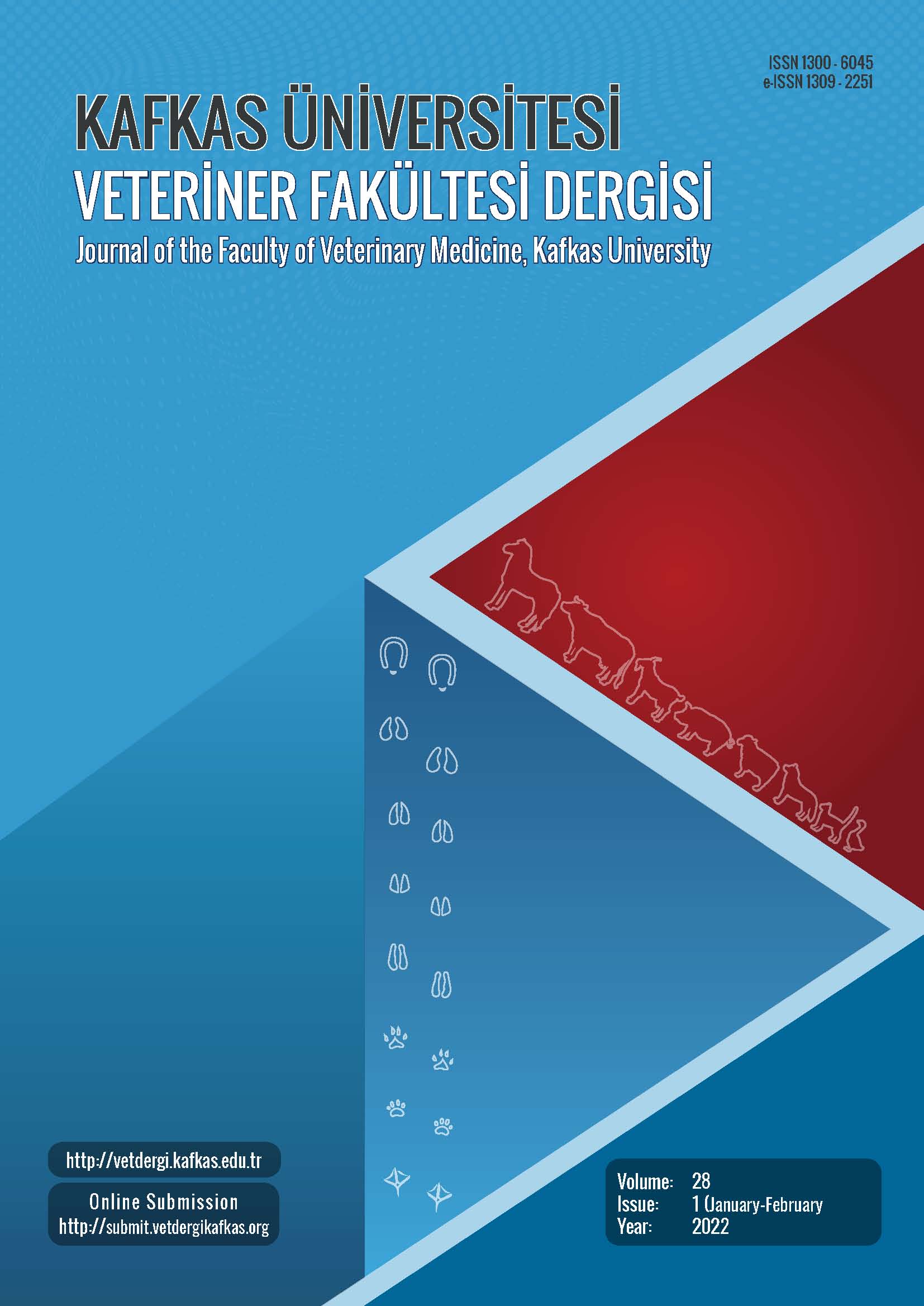
This journal is licensed under a Creative Commons Attribution-NonCommercial 4.0 International License
Kafkas Üniversitesi Veteriner Fakültesi Dergisi
2022 , Vol 28 , Issue 1
Effects of Dietary Cation-Anion Difference on Milk Performance, Digestion and Blood Parameters in Lactating Cows Under Heat Stress
1College of Animal Science and Technology, Hunan Agricultural University, Changsha 410128, CHINA2Key Laboratory of Agro-Ecological Processes in Subtropical Regions, National Engineering Laboratory for Pollution Control and Waste Utilization in Livestock and Poultry Production, Hunan Provincial Key Laboratory of Animal Nutrition & Physiology and Metabolism, Institute of Subtropical Agriculture, Chinese Academy of Sciences, Changsha 410125, CHINA
3Key Laboratory of Agro-Ecological Processes in Subtropical Regions, National Engineering Laboratory for Pollution Control and Waste Utilization in Livestock and Poultry Production, Hunan Provincial Key Laboratory of Animal Nutrition & Physiology and Metabolism, Institute of Subtropical Agriculture, Chinese Academy of Sciences, Changsha 410125, CHINA DOI : 10.9775/kvfd.2021.26377 The current study determined the effects of dietary cation-anion difference (DCAD) on milk performance, total apparent digestibility, and blood parameters in lactating cows subject to heat stress. Eight Chinese Holstein cows (22.04±2.38 kg of milk/d, 512±76 kg of body weight, 219±20 d in milk) at the late stage of lactation were allocated to group 1 or 2. We used a randomized complete block design with a 2x2 factorial arrangement. The experiment consisted of two periods. Each period lasted 21 days, including the first 14 days for adaptation to the diet and the following seven days for trail. During period 1, group 1 fed with DCAD at 216 mEq/kg dry matter (the basal diet=CON) and group 2 fed 398 mEq/kg dry matter (high DCAD). During period 2, group 1 diet (the basal diet = CON) was swapped group 2 diet (high DCAD). The high DCAD had no significant effects on the respiratory frequency, rectal temperature, blood pH value, the acid-base balance, milk yield, milk composition, and feed intake (P>0.05). However, the high DCAD was associated with lower somatic cell count (SCC) in milk (P=0.04) and lower immune cell counts in blood, which was conducive to the improvement of milk quality. The apparent digestibility of dry matter, organic matter, energy, neutral detergent fiber, and ethyl extract was greater in the high DCAD group (P<0.05). In summary, increasing DCAD in the diet could stabilize milk production and feed intake, improve milk quality and apparent digestibility in lactating cows subject to heat stress. Keywords : Dietary cation-anion difference, Milk performance, Digestive performance, Blood physiology










